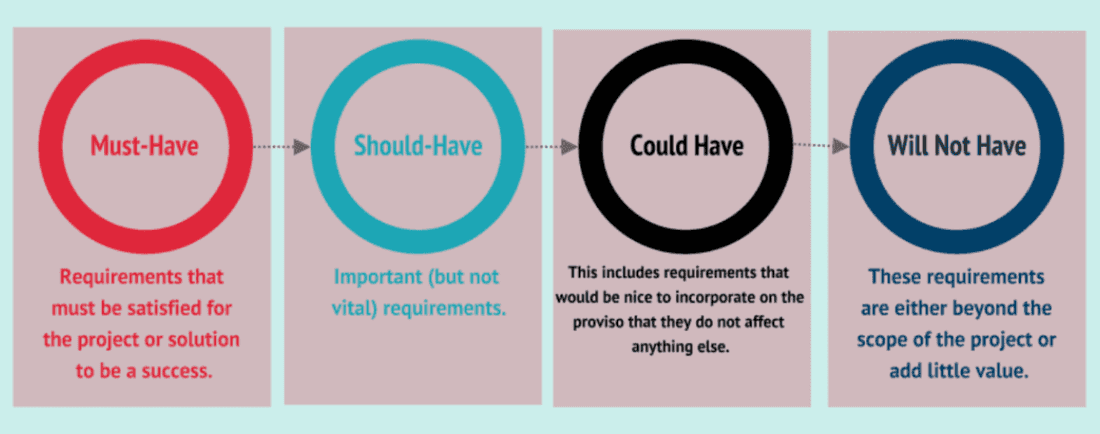The 5 Best Prioritization Activities for Product Team
Welcome to the world of product development, where the only constant is change and the most popular game is “Guess What’s Priority Today?”
In this article, we’re going to tackle the age-old dilemma: how to sort the vital few tasks from the trivial many without losing your mind (or your sense of humor).
Some of the things we will do in this article include:
- A carefully selected assortment of prioritization activities.
- Delve into the nuances of each technique, understanding why they stand out.
- Gain valuable insights and practical applications for each activity.
- Equip yourself with the knowledge to not just implement these activities but to lead them, fostering a culture of clarity and alignment within your team.
This article is more than a guide; it’s your toolkit for steering your team through the ever-changing tides of product development with confidence and precision.
When do you need a prioritization activity?
Think of prioritization activities as the Swiss Army knife in your product management toolkit – useful in more scenarios than you’d expect, and definitely more reliable than your intuition first thing on a Monday morning.
But when exactly do you whip out this versatile tool?
-
First up, when your team’s task list starts to read more like a Shakespeare novel than a couple of bullet points on a Post-it, that’s your cue for prioritization. These activities help by transforming your long list of backlogged tasks into a clear and focused agenda, preventing your team from losing direction in the maze of product development.
-
If team discussions about the next steps start to go in circles, a structured prioritization workshop can bring much-needed clarity. It cuts through the clutter, helping your team zero in on what’s important.
-
Finally, in times of major strategic changes – think shifts in market trends, new competitors, or changing customer demands – these activities are crucial. They ensure that your team’s efforts are aligned with these new dynamics.
Priority Activity 1: Impact vs. Urgency Matrix
Welcome to the Impact vs. Urgency Matrix, AKA The ‘What Do We Actually Do First?’ Game. This classic yet highly effective tool is ideal for bringing order to the chaos of competing priorities.
Setting It Up:
Begin by drawing a simple 2x2 matrix on a large whiteboard. Label one axis ‘Impact’ and the other ‘Urgency’. Impact refers to the long-term value or benefit of a task to the project or product, while Urgency relates to the immediacy of the task.
Conducting the Activity:
Invite your team to list all current tasks, projects, or features. Each item is then placed on the matrix, yes, even the ones they scribbled on a napkin during lunch. Tasks with high urgency and high impact go in the top right quadrant, while those with low urgency and low impact land in the bottom left.
Encourage discussion and debate – this is where the real value lies. It’s not just about placing tasks; it’s about understanding and agreeing on their priority.
Evaluating the Results:
Once all tasks are placed, you have a visual representation of what needs immediate attention (high impact, high urgency) versus what can wait (low impact, low urgency). This prioritization snapshot guides your team in allocating resources and time more effectively.
But don’t just frame this matrix and forget it. Priorities change faster than coffee preferences in your team, so keep this conversation going. This activity is less of a one-off meeting and more of an ongoing group therapy for your tasks.
Priority Activity 2: The MoSCoW Workshop

Introducing the MoSCoW Method, not a cold journey to Russia, but a hot approach to sorting tasks in a workshop setting. MoSCoW is an acronym that stands for Must have, Should have, Could have, and Won’t have. This technique is perfect for teams that love categorizing things and enjoy a good, old-fashioned prioritization showdown.
Setting It Up:
You’ll need a large space, like a whiteboard or a wall. Draw four columns and label them as ‘Must’, ‘Should’, ‘Could’, and ‘Won’t’. These categories will help your team decide the non-negotiables, the nice-to-haves, and the ‘maybe in another lifetime’ tasks.
Conducting the Activity:
Invite your team to brainstorm all the tasks, features, and initiatives on their radar. Then, it’s time for some serious sorting. Each task is debated (civilly, of course) and placed into one of the four categories.
- The ‘Must’ column is for those critical, do-or-die tasks.
- ‘Should’ is for important but not quite life-threatening items.
- ‘Could’ is for tasks that would be nice but won’t cause a catastrophe if left undone.
- And ‘Won’t’? Well, that’s the graveyard of wishful thinking.
Evaluating the Results:
You end up with a clear hierarchy of tasks, making it obvious where the team’s focus should be. The beauty of the MoSCoW Method is in its simplicity and clarity. It’s like giving your team a pair of X-ray glasses to see right through the clutter of tasks to the bones of what really matters.
Priority Activity 3: Story Mapping
The third act in our prioritization drama is Story Mapping. This activity isn’t just about listing tasks; it’s about crafting a narrative for your product’s journey. It’s perfect for teams that appreciate the power of storytelling in understanding the big picture of their project.
Setting It Up:
Find the biggest whiteboard or wall space you can – the kind you’d use to plan a moon landing or, in our case, something even more complex: a product roadmap You’ll also need a stack of sticky notes and markers.
The story map is laid out in a grid, with user activities or stories along the vertical axis and the sequence of these activities (like chapters in a book) along the horizontal axis.
Conducting the Activity:
Start by pinpointing the key milestones in your product’s journey. Each of these milestones, represented by sticky notes, finds a place along the vertical axis. Next, flesh out these milestones into finer details, placing them sequentially along the horizontal axis.
This process unfolds a visual story of your product’s evolution from mere concept to market reality.
Evaluating the Results:
Your story map transforms into a sprawling landscape of your project, highlighting both the mission-critical elements and the subtler, yet significant details. It’s an excellent tool for ensuring that your team is not just working on what’s urgent, but also on what’s important for the overall story of your product.
Priority Activity 4: The Kano Model Workshop
Activity four is all about the Kano Model, a technique that’s less about juggling tasks and more about delighting users. It’s ideal for teams wanting to understand how different features contribute to customer satisfaction.
Setting It Up:
For this workshop, you’ll need a spacious whiteboard or a large sheet of paper. You’re going to draw a graph that’s like a mood ring for your product features. One axis for customer satisfaction, the other for how snazzy your features are. Prepare cards or sticky notes for each feature or service you want to evaluate.
Conducting the Activity:
Start by presenting each feature to the team. Discuss and plot these features on the graph based on two criteria: how much satisfaction they provide when present and how much dissatisfaction they cause when absent.
Cue the passionate debates about what’s really going to woo your users. Sort features into categories like ‘Must-Haves’, ‘Performance’, ‘Indifferent’, or the coveted ‘Delighters’.
Evaluating the Results:
What emerges is a visual representation of your product’s features categorized by their impact on user happiness. This helps in understanding not just what needs to be built, but what should be prioritized to create maximum user delight.
Remember. keeping this model updated is as essential as keeping your dating profile fresh because let’s face it, customer preferences can be as fickle as online dating swipes. Just when you think you’ve nailed the perfect feature set, the market pulls a “it’s not you, it’s me” and suddenly you’re reevaluating everything.
Priority Activity 5: Buy a Feature

The final act in our prioritization playbook is ’Buy a Feature’, an exercise that’s part game show, part stock market frenzy, and a full-on prioritization revelation. This activity is perfect for teams looking to understand the perceived value of different features from a unique perspective.
Setting It Up:
Create a ‘market’ environment in your meeting space. List all the potential features, tasks, or projects on large cards and assign each a hypothetical price based on their complexity, resources needed, or strategic value. Provide each team member with an equal amount of ‘money’ to spend, think of it as the fantasy football of product management.
Conducting the Activity:
Team members ‘buy’ features they believe should be prioritized. The catch? They have limited funds, so they need to make strategic choices about what’s truly valuable. With their wallets not as thick as their ambitions, they’ll have to make some tough calls. This exercise ignites discussions about the worth of each feature and why it deserves a chunk of their budget.
Evaluating the Results:
At the end of the session, you’ll have a clear idea of which features are valued highest by the team. This not only helps in prioritizing tasks but also in understanding the team’s perspective on what drives the product forward.
The PM’s Hot Take:
At Fibery, we treat prioritization like a high-stakes game of poker – it’s about playing your best hand with the cards you’re dealt. These activities, especially the ‘Buy a Feature’ game, reveal more than just what features are popular. They’re a window into the team’s psyche – a way to see what they truly value when the chips are down. Sure, it’s all fun and play money, but the choices made in these games often mirror the real tough calls we face in product development. And just like in poker, sometimes the wildcard feature, the one you least expect, becomes the ace up your sleeve. So, we say, let the games begin – the insights might just surprise you!
Conclusion
Navigating the maze of product management just got a bit easier with these top 5 prioritization activities. Remember, effective prioritization is less about ticking boxes and more about strategic thinking and team alignment.
And if this just barely itched your craving for more clever insights and playful strategies, hop over to our treasure chest of articles on product management. We have a ton of resources available to help you maximize your PM journey.
Join the crew at Fibery where every day is an adventure in product development. Let’s make managing tasks as enjoyable as a game night!
Psst... Wanna try Fibery? 👀
Infinitely flexible product discovery & development platform.